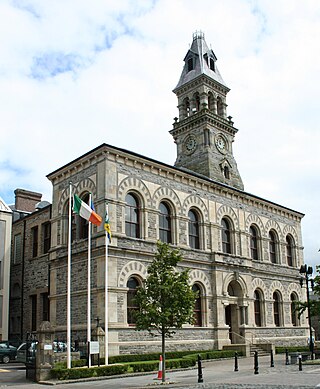
The Great Famine, also known as the Great Hunger, the Famine and the Irish Potato Famine, was a period of starvation and disease in Ireland lasting from 1845 to 1852 that constituted a historical social crisis and subsequently had a major impact on Irish society and history as a whole. The most severely affected areas were in the western and southern parts of Ireland—where the Irish language was dominant—and hence the period was contemporaneously known in Irish as an Drochshaol, which literally translates to "the bad life" and loosely translates to "the hard times". The worst year of the famine was 1847, which became known as "Black '47". During the Great Hunger, roughly 1 million people died and more than 1 million more fled the country, causing the country's population to fall by 20–25% between 1841 and 1871. Between 1845 and 1855, at least 2.1 million people left Ireland, primarily on packet ships but also on steamboats and barques—one of the greatest exoduses from a single island in history.

Connacht or Connaught, is one of the four provinces of Ireland, in the west of Ireland. Until the ninth century it consisted of several independent major Gaelic kingdoms.

Galway is a city in the county town of County Galway. It lies on the River Corrib between Lough Corrib and Galway Bay. It is the most populous settlement in the province of Connacht, the fifth most populous city on the island of Ireland and the fourth most populous in the Republic of Ireland, with a population at the 2022 census of 85,910.

John Behan is an Irish sculptor from Dublin.

Edward Delaney was an Irish sculptor born in Claremorris in County Mayo in 1930. His best-known works include the 1967 statue of Wolfe Tone and famine memorial at the northeastern corner of St Stephen's Green in Dublin and the statue of Thomas Davis in College Green, opposite Trinity College Dublin. These are both examples of lost-wax bronze castings, his main technique during the 1960s and early 1970s.

Sligo is a coastal seaport and the county town of County Sligo, Ireland, within the western province of Connacht. With a population of 20,608 in 2022, it is the county's largest urban centre and the 24th largest in the Republic of Ireland.

The Royal Canal is a canal originally built for freight and passenger transportation from Dublin to Longford in Ireland. It is one of two canals from Dublin to the River Shannon and was built in direct competition to the Grand Canal. The canal fell into disrepair in the late 20th century, but much of it has since been restored for navigation. The length of the canal to the River Shannon was reopened on 1 October 2010, but a final spur branch, to Longford Town, remains closed.

Oranmore is a town in County Galway, Ireland, 9 km (5.6 mi) east of Galway city on an inlet of Galway Bay. At the 2022 census, Oranmore had a population of 5,819.

Ballinasloe is a town in the easternmost part of County Galway in Connacht. Located at an ancient crossing point on the River Suck, evidence of ancient settlement in the area includes a number of Bronze Age sites. Built around a 12th-century castle, which defended the fording point, the modern town of Ballinasloe was "founded" in the early 13th century. As of the 2016 census, it was one of the largest towns in County Galway, with a population of 6,662 people.

Jeanie Johnston is a replica of a three-masted barque that was originally built in Quebec, Canada, in 1847 by the Scottish-born shipbuilder John Munn. The replica Jeanie Johnston performs a number of functions: it is an ocean-going sail training vessel at sea, and in port, it converts into a living history museum on 19th century emigration and, in the evenings, is used as a corporate event venue.

The Irish Commemorative Stone is a monument in Pointe-Saint-Charles, island of Montreal, Quebec commemorating the deaths from "ship fever" (typhoid) of 6,000 mostly Irish immigrants to Canada during the immigration following the Great Irish Famine in the years 1847-1848.
Celia Griffin was an Irish famine victim.

Kindred Spirits is a large stainless steel outdoor sculpture in Bailick Park in Midleton, County Cork, Ireland.

The Boston Irish Famine Memorial is a memorial park located on a plaza between Washington Street and School Street in Boston, Massachusetts. The park contains two groups of statues to contrast an Irish family suffering during the Great Famine of 1845–1852 with a prosperous family that had immigrated to America. Funded by a trust led by Boston businessman Thomas Flatley, the park was opened in 1998. It has received contrasting reviews and has since been called "the most mocked and reviled public sculpture in Boston".
The Great Hunger Memorial is a 16-foot tall Celtic cross located on Deer Island in Boston Harbor.
The Famine Remembrance Park is a memorial park located in Cleaghmore, Ballinasloe, County Galway, Ireland. The park is in remembrance of the Great Famine (1845–1849), which saw the population of the country halved through death and emigration.
Mary Ann McCarthy, born County Galway, Ireland in 1834, was an Irish orphan who fatally stabbed her husband Edward Young in Gulgong, New South Wales after he beat her with a horsewhip.













